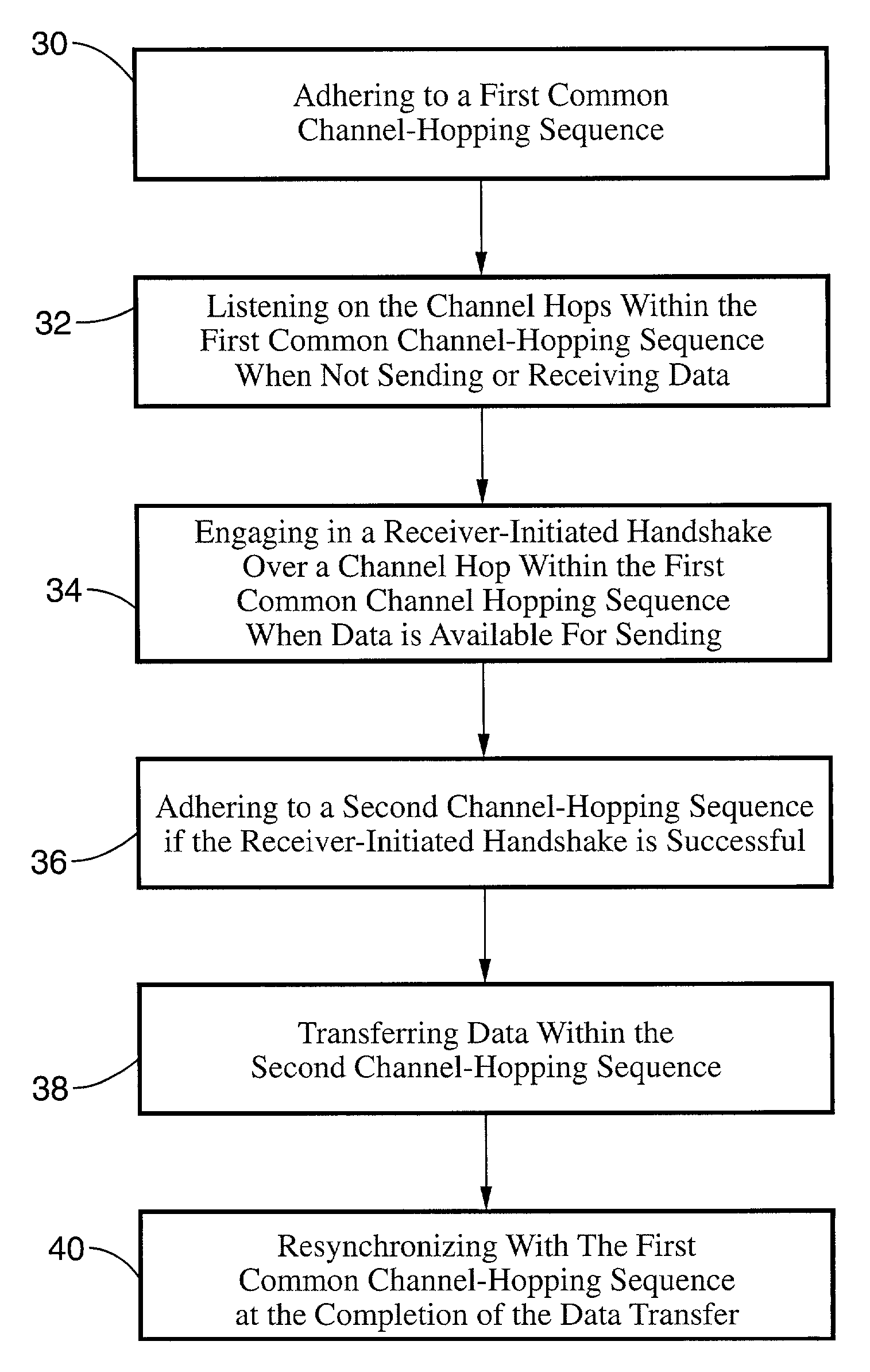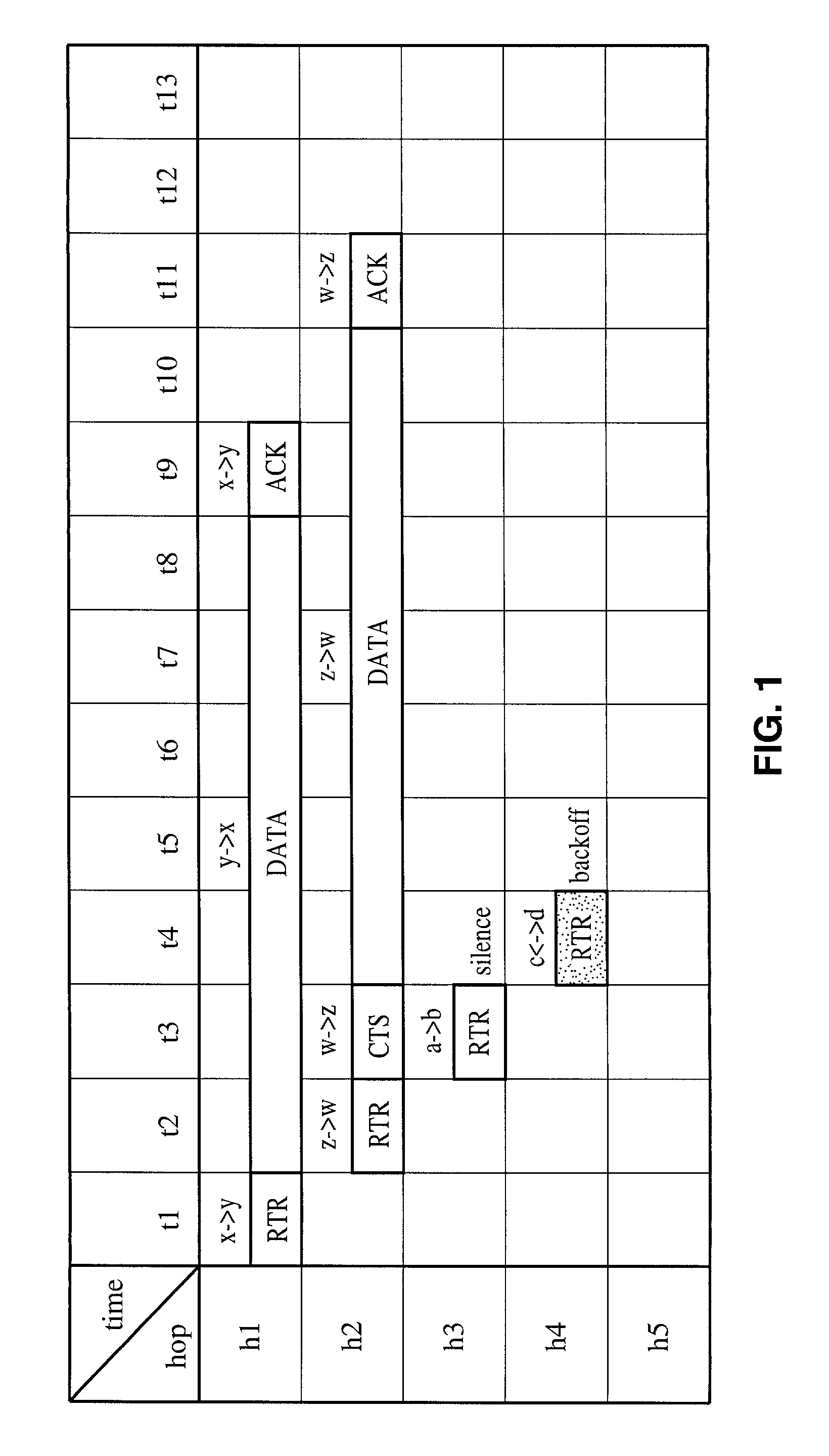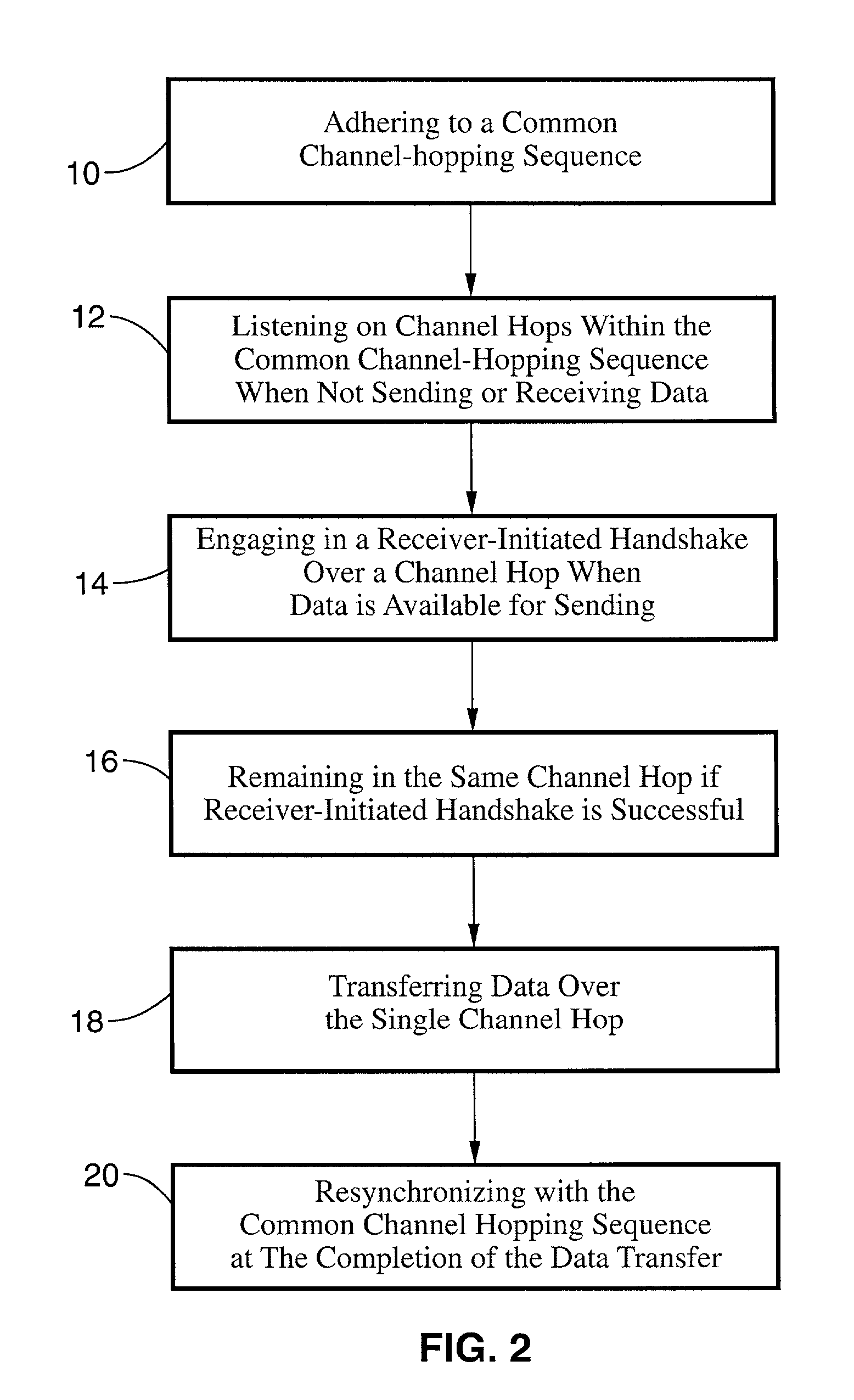Receiver-initiated channel-hopping (RICH) method for wireless communication networks
a wireless communication network and receiver-initiated channel technology, applied in data switching networks, frequency-division multiplexes, instruments, etc., can solve the problems of limiting the applicability of the radio, reducing the reliability of the radio, and not providing true carrier-sensing, so as to increase the communication throughput within the network and reduce the delay characteristics
- Summary
- Abstract
- Description
- Claims
- Application Information
AI Technical Summary
Benefits of technology
Problems solved by technology
Method used
Image
Examples
Embodiment Construction
[0055]For illustrative purposes the present invention will be described with reference to FIG. 1 through FIG. 26. It will be appreciated that the apparatus may vary as to configuration and as to details of the parts, and that the method may vary as to the specific steps and sequence, without departing from the basic concepts as disclosed herein.
1. Receiver-Initiated Channel-Hopping (RICH) Protocols
[0056]1.1. Basic Concepts in Channel Hopping
[0057]The RICH protocols of the present invention described herein were developed in accord with three basic observations. First, it has been generally determined within the industry that reversing the collision-avoidance handshake, with a receiver-centric approach, can provide for collision-avoidance and improved network throughput. Second, the use of code assignments to eliminate hidden-terminal interference results in excessive overhead. Third, commercially available frequency-hopping radios typically operate in ISM bands, thereby requiring th...
PUM
 Login to View More
Login to View More Abstract
Description
Claims
Application Information
 Login to View More
Login to View More - R&D
- Intellectual Property
- Life Sciences
- Materials
- Tech Scout
- Unparalleled Data Quality
- Higher Quality Content
- 60% Fewer Hallucinations
Browse by: Latest US Patents, China's latest patents, Technical Efficacy Thesaurus, Application Domain, Technology Topic, Popular Technical Reports.
© 2025 PatSnap. All rights reserved.Legal|Privacy policy|Modern Slavery Act Transparency Statement|Sitemap|About US| Contact US: help@patsnap.com



